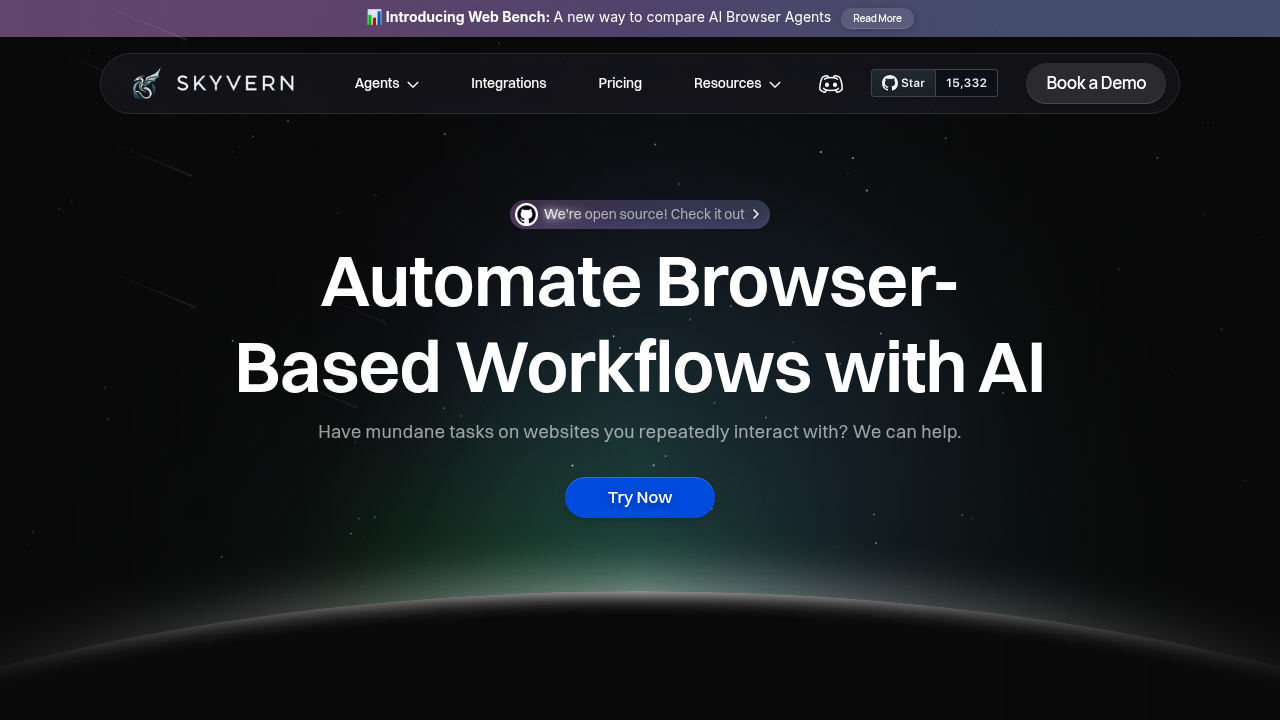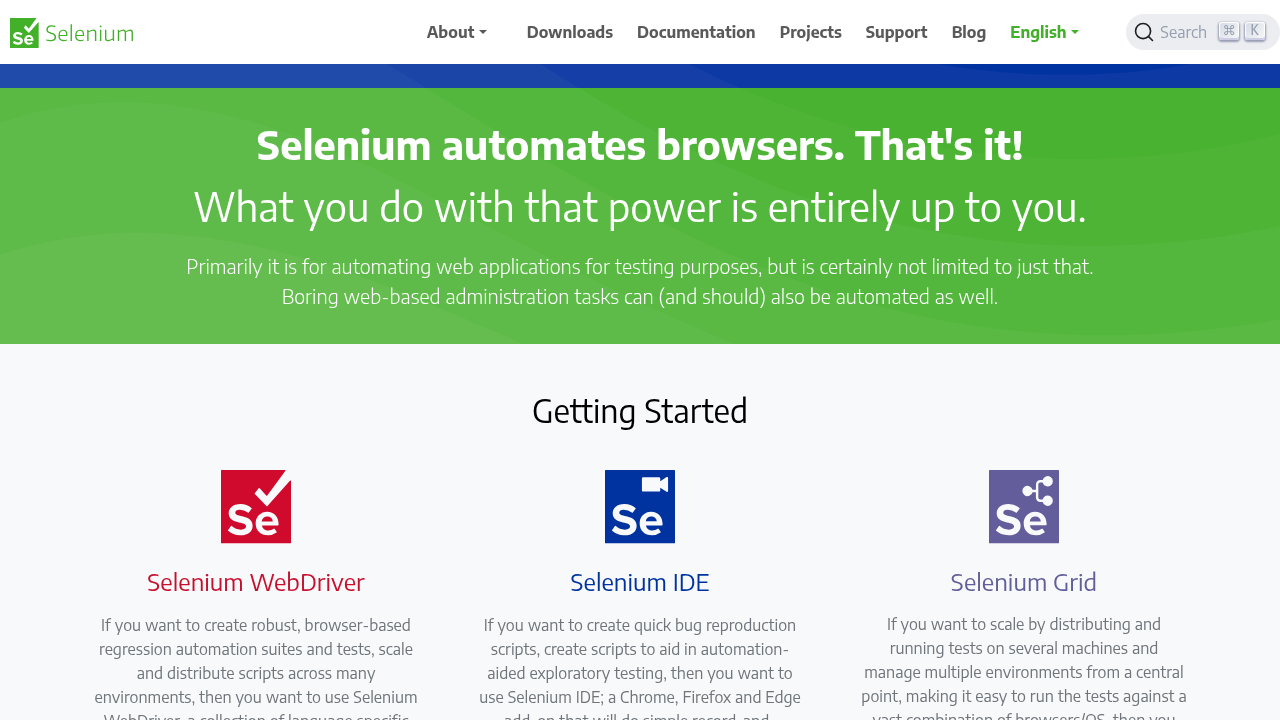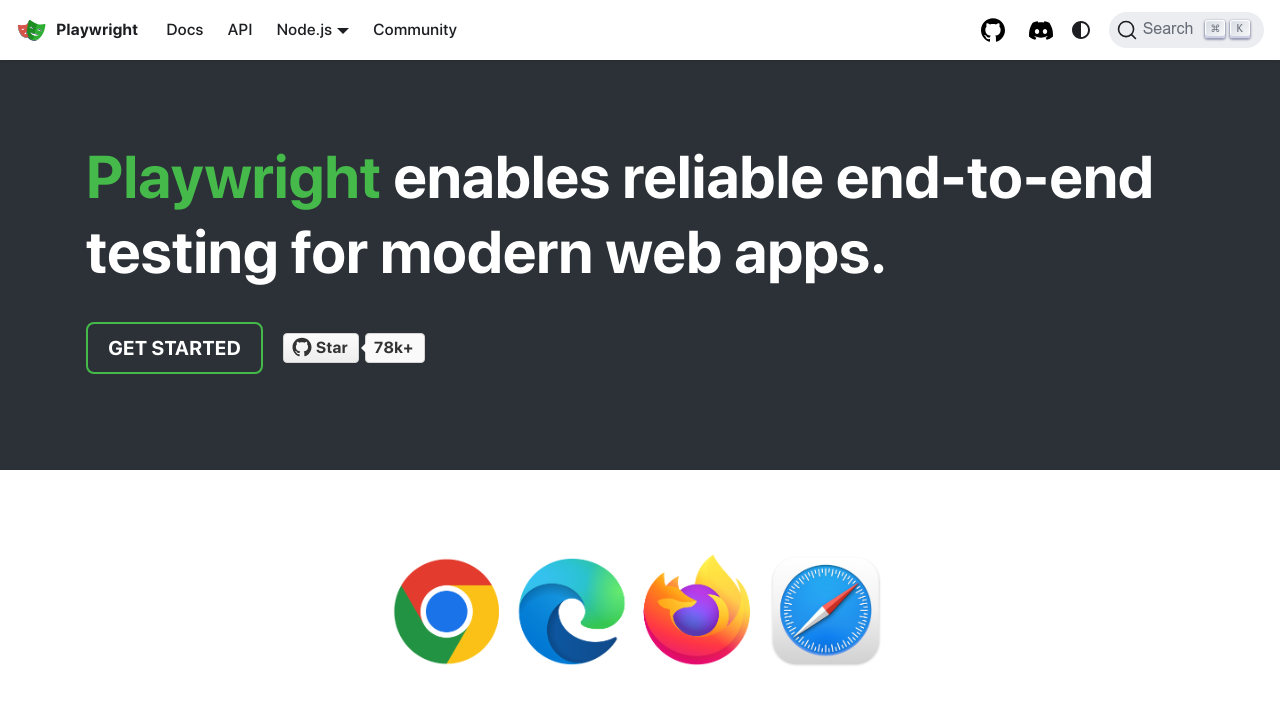Best Multi-Website Automation Platforms for Businesses (November 2025)

Everyone talks about browser automation, but most tools still need custom code for every single website you touch. When you're dealing with dozens of vendor portals or data sources, that approach falls apart quickly. Scalable web automation means writing one workflow that works everywhere, without breaking when sites update. We compared the platforms that claim to do this to find which ones are worth your time.
TLDR:
- Multi-website automation uses AI to run workflows across any site without custom code per domain
- Traditional tools like Selenium break when layouts change; AI-powered solutions adapt automatically
- Businesses waste 19.2% of IT budgets maintaining brittle scripts that require constant updates
- The best tool uses LLMs and computer vision to automate across hundreds of sites with one workflow
- Skyvern scored 85.8% on WebVoyager benchmark and handles 2FA, CAPTCHAs, and complex reasoning
What is Multi-Website Automation?
Multi-website automation refers to the ability to programmatically control web browsers to perform tasks across multiple websites and domains. Unlike traditional single-site automation that requires specific scripts tailored to individual websites, this approach uses universal methods to handle tasks like form filling, data extraction, and workflow execution regardless of site structure.
The key difference lies in adaptability. Single-site automation tools rely on predetermined elements like XPaths or CSS selectors that break when websites update their layouts. Multi-website automation works more like a human would, understanding website context and adapting to different layouts without manual reconfiguration.
This matters because businesses today interact with dozens or hundreds of websites. Whether they are downloading invoices from vendor portals, filling out forms across insurance sites, or extracting data from multiple sources, building and maintaining separate scripts for each site becomes unsustainable.
How We Ranked Multi-Website Automation Tools
We looked each tool across five critical dimensions that matter for real-world multi-website automation deployments:
- AI-Powered Adaptability: Can the tool handle websites it has never encountered before without writing custom code? We gave more weight to solutions that use LLMs and computer vision to understand website context over solutions that use brittle selectors which break with layout changes.
- Cross-Site Reliability: How well does the tool maintain consistent performance across different websites with varying structures? We looked at whether a single workflow could execute successfully on multiple domains without modifications.
- Enterprise Capabilities: We assessed authentication handling (including 2FA and TOTP), CAPTCHA solving, data extraction with structured schemas, file downloading, and proxy support. These features separate production-ready solutions from basic automation scripts.
- Ease of Implementation: How quickly can technical teams deploy and maintain these solutions? We weighed API simplicity, documentation quality, and whether the tool requires specialized expertise.
- Performance Benchmarks: We relied on publicly available data like WebVoyager evaluations, where top solutions achieve scores of 85.8%, not unverified marketing claims.
Best Overall Multi-Website Automation: Skyvern

Skyvern uses LLMs and computer vision to automate workflows across websites without site-specific configuration.Traditional automation breaks when websites change their layout because it relies on XPaths or CSS selectors, unlike open source browser automation tools that offer more flexibility. Skyvern interprets websites visually and contextually instead.
You define what needs to be done through an API endpoint, and Skyvern executes it across different sites without custom scripts. Getting started with Skyvern is straightforward for technical teams. A single workflow can handle form filling or data extraction across vendor portals, insurance sites, or procurement systems without modification.
Skyvern 2.0 has complex reasoning capabilities. It can infer answers to eligibility questions, understand product equivalents across different catalogs, and make contextual decisions during execution. It handles workflows that require genuine intelligence, not click-and-type operations.
When you deploy Skyvern in production, you'll get native 2FA and TOTP support, CAPTCHA solving, proxy networks with geographic targeting, and structured data extraction to JSON or CSV. The managed cloud version handles anti-bot detection and parallel execution automatically.
Selenium

Selenium is an open-source browser automation framework with over two decades of development history. The framework requires programming expertise and custom code for each website you automate. Key features include:
- Cross-browser testing capabilities using the WebDriver protocol
- Multi-language support including Python, Java, and JavaScript
- Extensive ecosystem with testing integrations and CI/CD support
- Distributed testing through Selenium Grid for parallel execution across machines
The downside? Every site requires building and maintaining specific element selectors that break when layouts change. You'll need additional tools for advanced automation scenarios like CAPTCHA solving or complex reasoning.
The bottom line: Use Selenium when testing scenarios where you're repeatedly validating the same websites.
Playwright

Microsoft's open-source browser automation framework controls Chromium, Firefox, and WebKit through a single API. Built for testing and scraping, it targets developers who need cross-browser compatibility, not multi-website workflows. Key features include:
- Single API controls multiple browser engines at once
- Auto-waiting features and debugging tools for test development
- Supports JavaScript, Python, Java, and .NET
- Headless execution for running tests without visible browser windows
The downsides? Running multiple browser instances drains memory quickly, creating performance bottlenecks at scale.
The bottom line: Playwright handles cross-browser testing well but needs heavy coding for multi-website automation. It lacks AI-powered adaptability when encountering unfamiliar site structures.
Puppeteer

Puppeteer, from Google, is a Node.js library that controls Chrome or Chromium browsers. The tool focuses on Chromium-based browsers with headless execution by default. Key features include:
- High-performance browser automation optimized for Chrome and Chromium
- JavaScript-native API with headless execution for resource savings
- PDF generation and screenshot capabilities for content processing
- Direct Chrome DevTools Protocol access for advanced debugging
The downsides? The library only runs in Node.js environments, which limits flexibility if your tech stack uses other languages. Advanced anti-bot systems can detect Puppeteer, making it unreliable for sites with sophisticated protection. You're locked into Chromium browsers, so testing across Firefox or Safari requires different tools. Like other traditional frameworks, it requires custom coding for each site and breaks when layouts change.
The bottom line: An open-source approach that provides web automation but is limited in the scope of what it can do.
Cypress

Cypress is a JavaScript-based end-to-end testing framework that runs directly within the browser. The tool was built for testing workflows, not multi-website automation. Key features include:
- Real-time visual test runner with time-travel debugging
- Automatic waiting for elements without manual timing code
- Built-in network control for stubbing and modifying HTTP requests
The downsides? Cypress was designed for testing, not multi-website automation. It lacks features needed for production automation like proxy support, CAPTCHA handling, or cross-site adaptability. The framework requires custom code for each site you automate.
The bottom line: Cypress serves testing teams well but can't handle complex multi-website automation requirements.
Browserflow

Browserflow is a no-code automation tool built around a Chrome extension and visual builder for basic browser tasks. Non-technical users can create workflows through drag-and-drop without writing code. Key features include:
- Visual automation builder for simple browser workflows
- Chrome extension-based execution
- Cloud scheduling for automated task runs
- Drag-and-drop interface requiring no programming knowledge
The downsides? The tool handles straightforward scenarios but lacks AI-powered reasoning for complex multi-website automation. It cannot adapt to unfamiliar site structures or handle sophisticated enterprise requirements like advanced authentication or CAPTCHA solving.
The bottom line: Browserflow works for basic automation tasks but cannot scale to multi-website workflows that growing businesses need.
Feature Comparison Table of Multi-Website Automation Tools
Feature | Skyvern | Selenium | Playwright | Puppeteer | Cypress | Browserflow |
|---|---|---|---|---|---|---|
AI-Powered Adaptability | ✅ Full LLM/CV | ❌ None | ❌ None | ❌ None | ❌ None | ❌ Limited |
Multi-Website Support | ✅ Universal | ⚠️ Custom Code | ⚠️ Custom Code | ⚠️ Custom Code | ❌ Limited | ⚠️ Basic |
Layout Change Resistance | ✅ Automatic | ❌ Breaks | ❌ Breaks | ❌ Breaks | ❌ Breaks | ❌ Breaks |
Cross-Browser Compatibility | ✅ All Major | ✅ All Major | ✅ Major Three | ❌ Chrome Only | ⚠️ Limited | ❌ Chrome Only |
Programming Required | ❌ API Only | ✅ Extensive | ✅ Extensive | ✅ Extensive | ✅ Moderate | ❌ No-Code |
Enterprise Features | ✅ Full | ⚠️ Additional Tools | ⚠️ Additional Tools | ❌ Basic | ❌ Testing Focus | ❌ Limited |
Complex Reasoning | ✅ LLM-Powered | ❌ Rule-Based | ❌ Rule-Based | ❌ Rule-Based | ❌ Rule-Based | ❌ None |
Traditional frameworks require custom code for each website and break when layouts change. Only AI-powered solutions maintain reliability across unfamiliar sites without constant maintenance.
Why Skyvern is the Best Multi-Website Automation Tool
The core advantage comes down to adaptability. While traditional tools require developers to write and maintain separate scripts for each website, Skyvern's LLM and computer vision approach means one workflow works across hundreds of sites. When websites change their layouts, conventional scripts break. Skyvern adapts automatically.
The obvious benefit is in time saved. First, your team doesn't have to spend time maintaining scripts for each website. Second, because Skyvern provides a multi-website approach, your team defines what needs to happen once, and the API handles execution across any website without ongoing maintenance.
What makes all this possible is complex reasoning. Skyvern doesn't click buttons. It understands context, infers answers to conditional questions, and makes decisions during execution. This handles workflows that would require extensive custom logic in traditional frameworks.
For organizations scaling automation across multiple vendors, partners, or data sources, maintaining separate scripts becomes impossible. Skyvern provides the universal approach that works in production, backed by an 85.8% WebVoyager benchmark score and open-source transparency.
FAQ
How does multi-website automation differ from traditional single-site automation?
Traditional automation requires custom scripts for each website using XPaths or CSS selectors that break when layouts change. Multi-website automation uses AI to understand website context and adapt to different structures automatically, allowing one workflow to work across hundreds of sites without modification.
What should I look for in a production-ready multi-website automation tool?
Look for AI-powered adaptability that handles unfamiliar websites, native support for 2FA and CAPTCHA solving, structured data extraction capabilities, proxy network support, and resistance to layout changes. The tool should work through an API without requiring custom code for each site.
When does it make sense to switch from Selenium or Playwright to an AI-powered solution?
If you're spending a lot of time maintaining scripts after website updates, need to automate across dozens of different sites, or require complex reasoning beyond simple click-and-type operations, AI-powered solutions will save development time and reduce maintenance overhead.
Can multi-website automation handle complex workflows like conditional form filling?
Yes, LLM-powered solutions can infer answers to eligibility questions, understand product equivalents across different catalogs, and make contextual decisions during execution. This goes beyond basic automation to handle workflows requiring genuine intelligence.
Final thoughts on multi-website automation technology
The gap between rule-based scripts and AI-powered automation keeps growing. Scalable web automation means your team stops writing brittle selectors that break with every layout change. You get workflows that reason through complex scenarios and adapt to unfamiliar sites automatically. The ROI shows up fast when your team spends less time maintaining scripts for individual websites and more time on developing automation to benefit the business.

